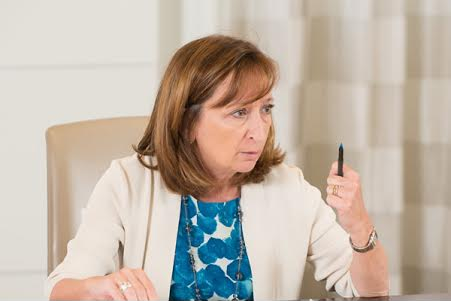TDS Telecom, a service provider mainly focused on serving rural markets, says that the FCC’s A-CAM proposal laid out during its monthly meeting will enable it to more effectively build out a larger customer base for business data services (BDS).
During its monthly meeting, the FCC proposed to allow rate of return (ROR) carriers that chose to receive Universal Service Fund (USF) funding based on the A-CAM forward-looking cost model to voluntarily migrate their lower-speed TDM BDS services to price-cap regulation.
Under the FCC’s proposal, A-CAM carriers that migrate to incentive regulation for their lower speed TDM BDS would no longer need to conduct expensive and time-consuming cost studies. The notice also seeks comment on the elimination of ex ante pricing regulation for packet-based and higher speed TDM-based BDS.
Additionally, the FCC’s notice is asking for comment on designing a competitive market test in A-CAM areas to determine where competition is available and whether there should be further relief from ex ante pricing rules for lower speed TDM BDS in areas deemed competitive. Finally, the notice proposes allowing other ROR carriers receiving fixed support to opt into this same regulatory paradigm.
Under the proposal, BDS pricing would remain subject to statutory mandates requiring the FCC to ensure that rates, terms, and conditions of service are just, reasonable, and nondiscriminatory.
Drew Petersen, SVP of corporate affairs, told FierceTelecom in an e-mail that the FCC’s plan would free the service provider up to pursue new BDS opportunities.

“This would also relieve us from several federal regulatory obligations, such as cost studies for federal matters, and we would have the flexibility necessary to compete more vigorously in the market for business data services,” Petersen said.
Petersen added that the service provider is in the process of reviewing the FCC’s A-CAM BDS proposal.
“Given particular nuances proposed in the notice, we are evaluating the impact of these rules on our operations to determine if we will be opting into such regulation for our BDS services,” Petersen said.
Working alongside the ITTA, TDS Telecom has been an advocate of this option for its provisioning of BDS services. Previously, TDS Telecom and the ITTA filed a petition with the FCC requesting that model-based ROR carriers (such as TDS Telecom’s ILECs) be permitted to opt into existing price cap regulation for their provisioning of BDS services.
Genny Morelli, president of ITTA, also applauded the FCC’s move to unshackle smaller providers from a set of rules that are outdated.

“Legacy regulations impose unnecessary and burdensome costs on fixed support carriers and preclude them from offering beneficial rates and terms to their BDS customers,” Morelli said in a statement. “The decision to allow replacement of those outdated rules with incentive regulation would further the Commission’s goals to reduce unnecessary regulations while promoting competition and investment. ITTA looks forward to working with the Commission to adopt an order that provides for the regulatory flexibility requested in the ITTA/USTelecom petition.”
Commissioners cite support, caution
The majority of the FCC voted to support the new Notice of Proposed Rulemaking to enable model-based ROR carriers to elect incentive regulation for their lower-speed business data services offerings, and to remove ex ante pricing regulation for packet-based and higher-speed circuit-based offerings.
FCC Commissioner Brendan Carr cited how the availability of affordable BDS services has made an impact on a medical clinic and high school in rural Beatty, Nevada. Due to the economic challenges of serving this small rural community, this medical clinic was almost forced to shut its doors. By installing a broadband connection, Carr said that it “can now afford to keep a nurse on site and patients can visit virtually with a doctor located in a larger town.”
“Businesses both large and small, including schools and medical facilities, rely on what we at the FCC refer to as 'business data services' (or 'BDS') to connect to the Internet,” Carr said in a statement. “But to date, many small rural carriers have been saddled with legacy regulatory costs that no longer apply to many of their larger competitors. By proposing to remove the overhang of these burdensome pricing rules, we are aiming to free up additional capital that these smaller providers can use to build out their networks, hire new employees, and serve additional customers. This could make a real difference for businesses in rural America.”
Mignon Clyburn, while voting in support of the BDS NPRM, said that the FCC should be careful in implementing the new BDS framework in rural markets.

“I will never object to a framework that minimizes regulatory burdens, when there is evidence that market forces are sufficient to discipline prices, but we must not repeat the mistakes of the 2017 BDS order—where the majority chased deregulation at all costs,” Clyburn said. “We need reliable data to determine a competitive test. We need to assess the number of providers necessary for true competition to discipline this market, and there needs to be appropriate geographic and product market definitions in our analysis which is why further stakeholder engagement is needed. Without it, we run the risk that the next step the Commission takes, could end in a result I cannot abide: a deeper digital divide.”
A-CAM shift
A-CAM carriers are rural carriers whose pricing was historically governed by ROR regulation: they reported costs annually to the FCC and were allowed a ROR, set by the FCC, on those costs.
Revenue sources for ROR carriers include interstate access charges paid by other carriers, support from the FCC’s USF for high-cost rural areas, and customer rates. In 2016, the FCC said that over 200 ROR carriers opted to base their level of universal service support on an FCC model—the A-CAM model—rather than costs, leaving only their business data services under cost-based regulation.
TDS was one of the service providers which agreed to migrate to the A-CAM model in 2016.
Being a rural carrier, TDS Telecom also accepted about $75.1 million a year for the next 10 years from the FCC’s A-CAM program to expand rural broadband availability, for example. TDS Telecom is among 182 companies to receive a total of $454 million in alternative rural broadband funding.
